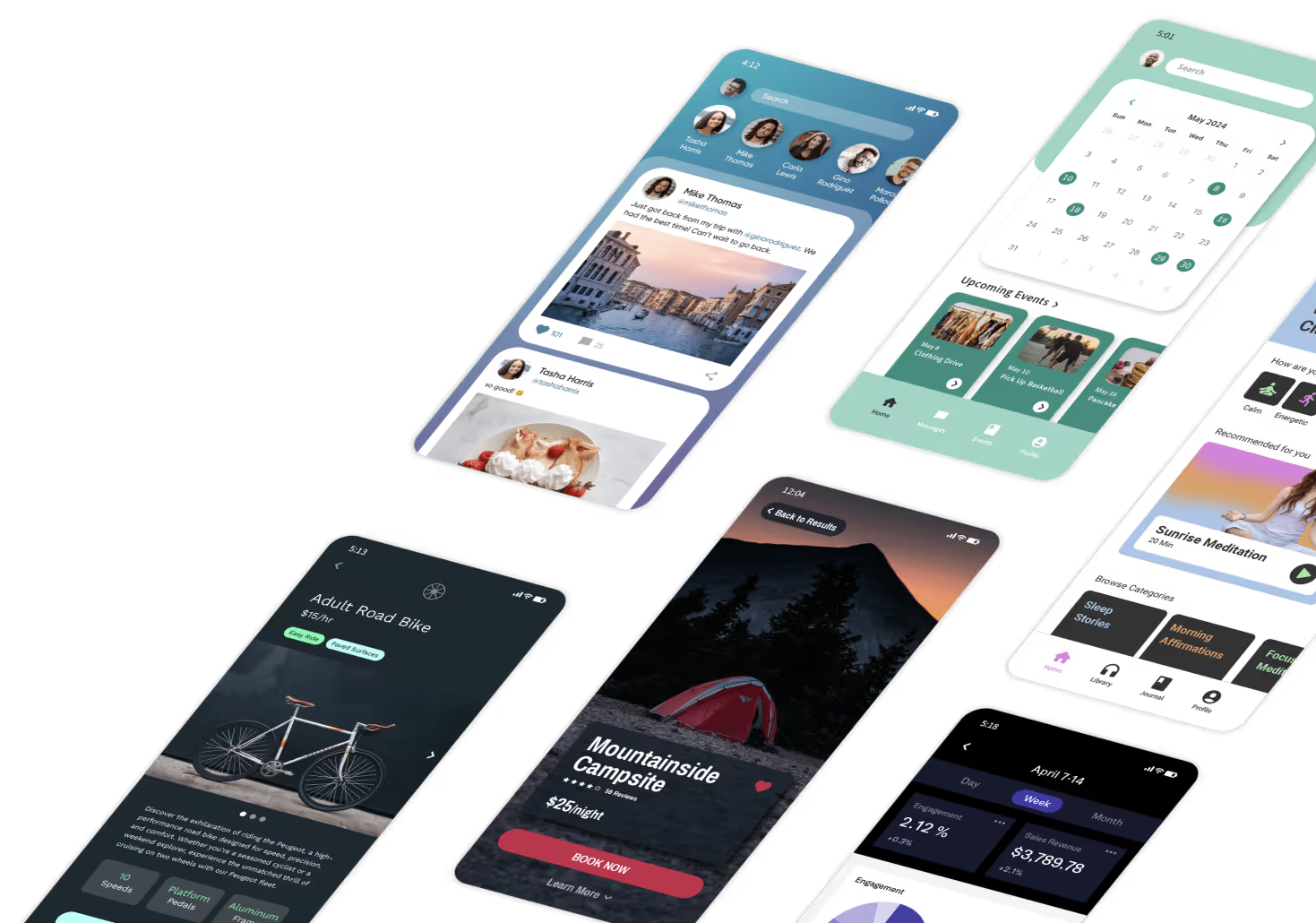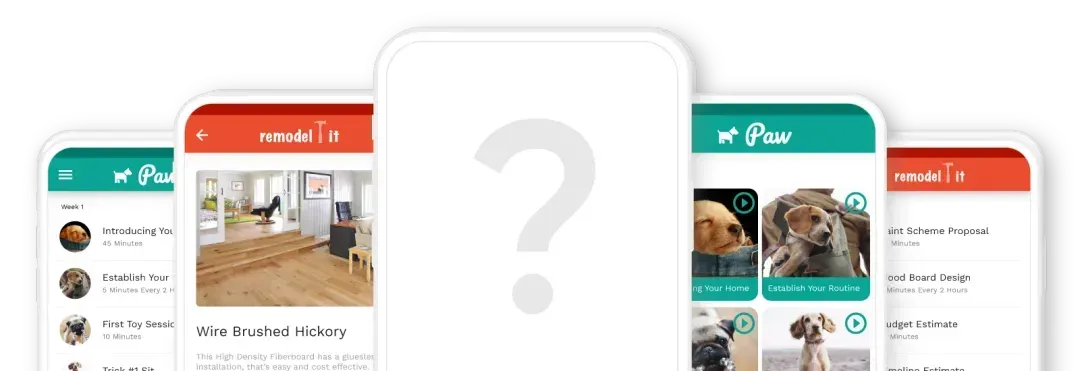You’ve run your business for several years, building a loyal client base enthusiastic about your products and services. You’ve had a website for over a decade, and you jumped on social media as soon as it became a thing. So this means you’re all up to date with technology, right?
Wrong. It’s 2023, and a growing number of businesses are using apps to directly connect with their clients and potential clients. Apps improve the customer experience. They simplify purchasing, scheduling, and a whole lot more. If you want to remain competitive, you’ll need an app for your business.
Luckily, you don’t need any technical knowledge or coding know-how to build an app, you can do it all by yourself.

In today’s article, we will guide you on getting started with building an app for your business.
Start With Your App’s Purpose
It’s important to determine your app’s purpose. Consider how your app will enhance your customer experience or your business’s operations. Are you a bit curious about what an app can do for your business? We’ve put together a few functions you can have your app perform:
- An Online Booking and Scheduling System: Allow your clients to view available time slots for services and book with ease. For instance, if you run a massage business, your clients can select a massage therapist, determine when they are available, and book a massage appointment nicely and quickly.
- Chatbot: Instead of using SMS, WhatsApp, or text, chat directly with clients by creating a chatbot for your app. By streamlining chats, you’ll be able to immediately chat with clients in one place, rather than dealing with the inconvenience of navigating through several apps trying to find your contacts. When you use your own chat service, you’ll appear more professional, too. It’s a win-win.
- Push Notifications: Do you need to send a reminder to a client about tomorrow’s appointment? Send them a push notification using your app. You can also use push notifications to spread the word about new products or put out a limited-time offer.
- Payments: Allow your clients to pay for your products or services directly from your app. Most app builders are integrated with payment platforms like Stripe, so creating a customer payment function is super easy.
- Community Review: It’s important to give your clients the option to leave a review about their experience with you on your app. Use this feature to spotlight your superior product or service for your potential clients.
- Customer Relationship Management (CRM): You can use your own app to effectively manage your internal operations too. Make profiles for each client, complete with their payment and communication history. You’ll be able to build a CRM system to fit the exact needs of each client in no time.
- Online Store: Create a catalog of your products for customers to select, order, and integrate with logistics companies so you’ll have the ability to ship products immediately after receiving payment.
What are No-Code App Builders?
No-code app builders are exactly what they sound like - software that lets you build an app without having to write any code. With no-code tech, even those with no tech experience can create professional-looking apps, just like experienced coders.
Instead of building your site by tediously writing line after line of code, you can use a drag-and-drop interface to build your app. Select a template from your app builder’s template library, and add buttons, listings, charts, and other functions you want to include in your app.
Using a drag-and-drop interface is incredibly easy. Within seconds of creating an account, you can immediately start building your own app.
How We Evaluate App Builders for Your Business
If you Google “no-code app builder,” you’ll get an eye-watering amount of results. It will take hours to filter through and find which app best suits you and your needs. Luckily, we did all the heavy lifting for you and have determined the top three no-code app builders available.
We considered the following when selecting our no-code app builders:
- Customer Centric: Many app builders are more suited towards building operations management applications, like managing your data or providing a stellar CRM. While these are important, they aren’t optimized for apps that customers use, like booking, scheduling or purchasing.
We’ve ensured that each app builder lets you build features that your customers will not only use but will also improve their overall experience.
- Mobile App Enabled: One of the main purposes of building an app is to make it easy to download on mobile devices. Some app builders only allow users to create web apps, which are essentially extensions of a website.
The app builders we chose allow you to make your app available for download directly to consumers’ phones or mobile devices.
- Integrations: Your app will need to be integrated with Google so you’re able to send emails and schedule reminders to users’ calendars, payment platforms for accepting payments, and databases for storing your information.
We’ve made sure that each app builder can integrate with other platforms that your business uses to operate.
Here is our list of the top three app builders that you can use to build a solid app for your business:
- Adalo, for maximum design freedom, uses a super simple drag-and-drop interface.
- Stacker, for big organizations needing to simplify integrating data from various sources.
- Glide, for easily and quickly designing gorgeous apps using unique logic based on how spreadsheets work.
Adalo

Out of all the app builders on our list, Adalo’s drag-and-drop interface is easy to learn and gives you the most design freedom, offering several components for building your app in its drag-and-drop interface. It’s so intuitive that you can learn as you build, so you won't need to spend time on watching tutorials. Adalo also has a massive community that has collectively built over a million apps. Why not jump in and learn from the best?
Adalo’s Features:
- Out of all the app builders on our list, Adalo has the most integrations. If you use Adalo to build your app, you’ll have access to thousands of them. These tools will let you implement features that can optimize your CRM and add features to client communication.
For instance, Adalo’s integration with Twilio will allow you to create your own in-app messaging platform so your team can communicate directly with clients.
- After you finish building your app, you can publish it to the Apple App Store and Google Play Store, where your clients can download your app for free. They’ll love the convenience of getting your app to their mobile device in under a minute.
- If you have any questions about plugging certain features into your app, or you want to check out some examples of others’ work, you can visit the Adalo Forum. You’ll be able to connect with thousands of Adalo users who can help you create an incredible app.
Pricing
Adalo’s pricing plans start at $36/month.
Stacker

Stacker is designed to build apps for medium and large-sized companies that must organize large amounts of data. You can use Stacker to gather data from several different sources or databases, centralize it, and put it to work in your app.
With Stacker, your team will be able to create apps that accommodate customers or smooth internal operations in just a few minutes.
Stacker’s Features
- Stacker excels at creating CRM tools by allowing you to extract data from sources like Salesforce, Google Sheets and Airtable. Use Stacker to create customer profiles and track their spending habits and interactions with your staff. For large companies with a sprawling customer base that uses tons of data, a Stacker-built app can significantly ease your CRM.
- If you’re running a big organization, Stacker’s robust security options will make you feel a lot more comfortable. Stacker offers advanced security for enterprise-level organizations, coupled with a data-breach protocol.
- To optimize your client experience, Stacker provides you with the power to build highly customizable customer accounts. You can configure each account to reflect the specific needs of each client.
For instance, if you’re a legal firm serving corporate clients, you can build an app that allows them to quickly access legal documents and live chat with their attorney if they have any sudden questions.
Pricing
Stacker’s pricing starts with the Starter plan at $59/month and lets you build one app for large businesses. Choose the Custom plan to build unlimited apps and harness all security functions, but you’ll have to contact them directly for Enterprise pricing.
Glide

Glide combines the logic of spreadsheets with an easy-to-use drag-and-drop interface, giving you the power to create apps, tools, and a whole bunch of other features that will optimize your business. You’ll have access to a large library of diverse app templates to choose from, letting you create a design that aligns with your vision.
- Not only does Glide integrate seamlessly with Google Sheets for extracting and organizing data, but Glide can transform a Google Sheet into an app. For instance, if you have all your data for your online store saved in a Google sheet, use Glide to make that sheet into your own store.
- Glide’s interface is very easy to use. Although it lacks some of the customization features you’ll get with Adalo or Stacker, you’ll be able to build an app with Glide at a lightning pace. So, if you're on a tight schedule, Glide is the one for you.
- Did you recently onboard a new client that has the same needs or is in a similar industry to an existing client? Save time making similar apps by leveraging Glide’s clone feature. This enables you to use look-alike templates but enter different data for other clients.
Pricing
Build up to three apps with Glide’s free plan. Level up to their Pro plan for $99/month and create unlimited apps.
Next Steps: Test, Launch, and Update Your App
After you build your app, you’ll want to test it to ensure it completes all the functions you need it to. Let your employees use it first, and gather feedback for making more adjustments.
When it's ready for clients, experiment with a client that you’ve had on board for a while and have a good relationship with. Clients like this will be more likely to help you develop your app. When you’re certain your app functions smoothly, make it available to all clients.
After launching your app, watch over it as if it were your firstborn child. Take a few minutes each day to ensure that each feature functions properly. Glitches and bugs that result from neglecting your app will ruin your customer experience and soil your reputation. Always make certain that your app works smoothly!
You’ll also want to periodically update your app - whether it be a simple change in the color scheme or the major addition of a new function like a takeout system for a restaurant.
Building an app for your business is like investing. While you’ll most likely pay a little money upfront and spend a bit of time tailoring your app to your exact needs, your team and your customers will appreciate the convenience a custom-made app brings.












.png)
.png)

.png)